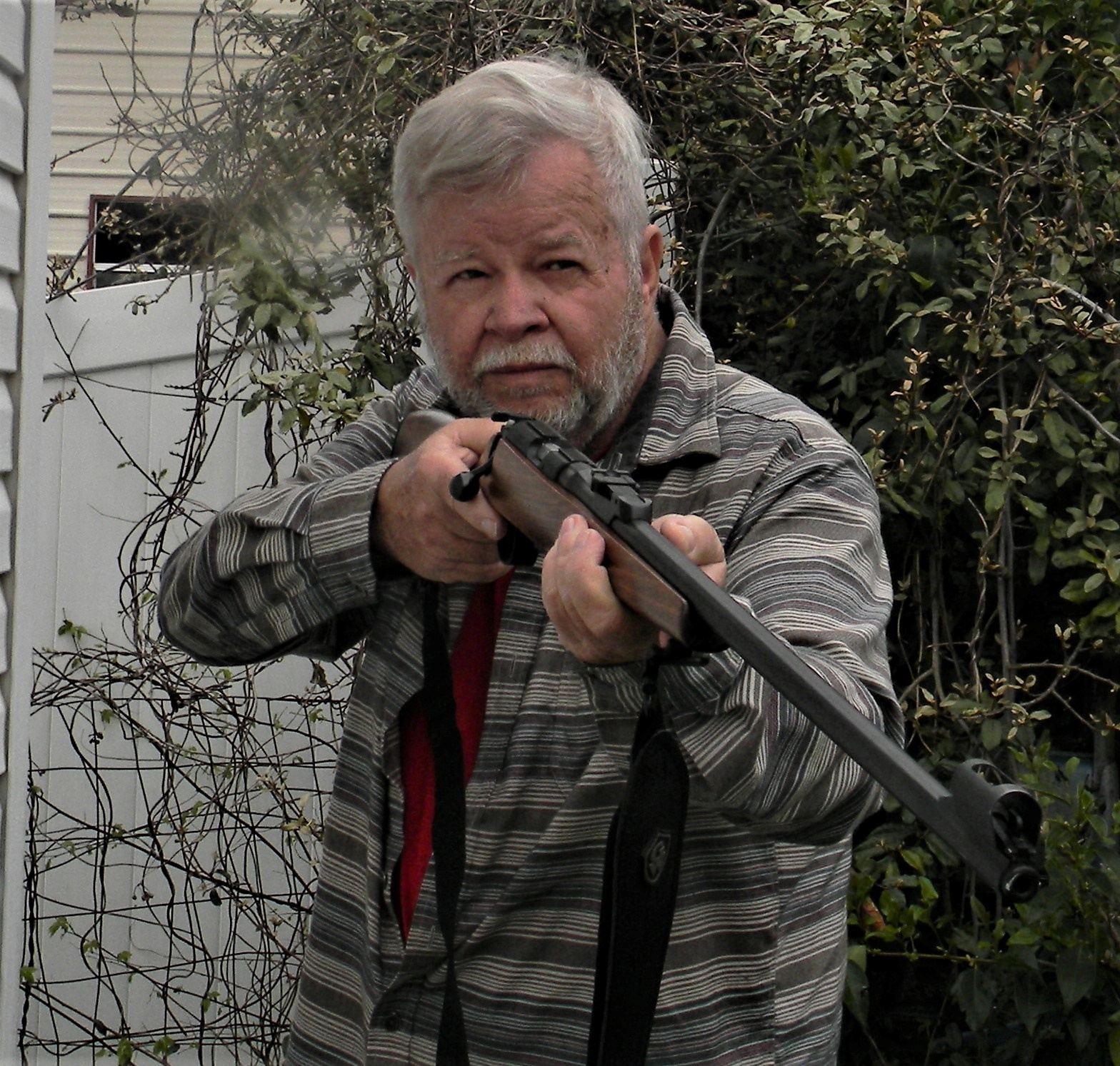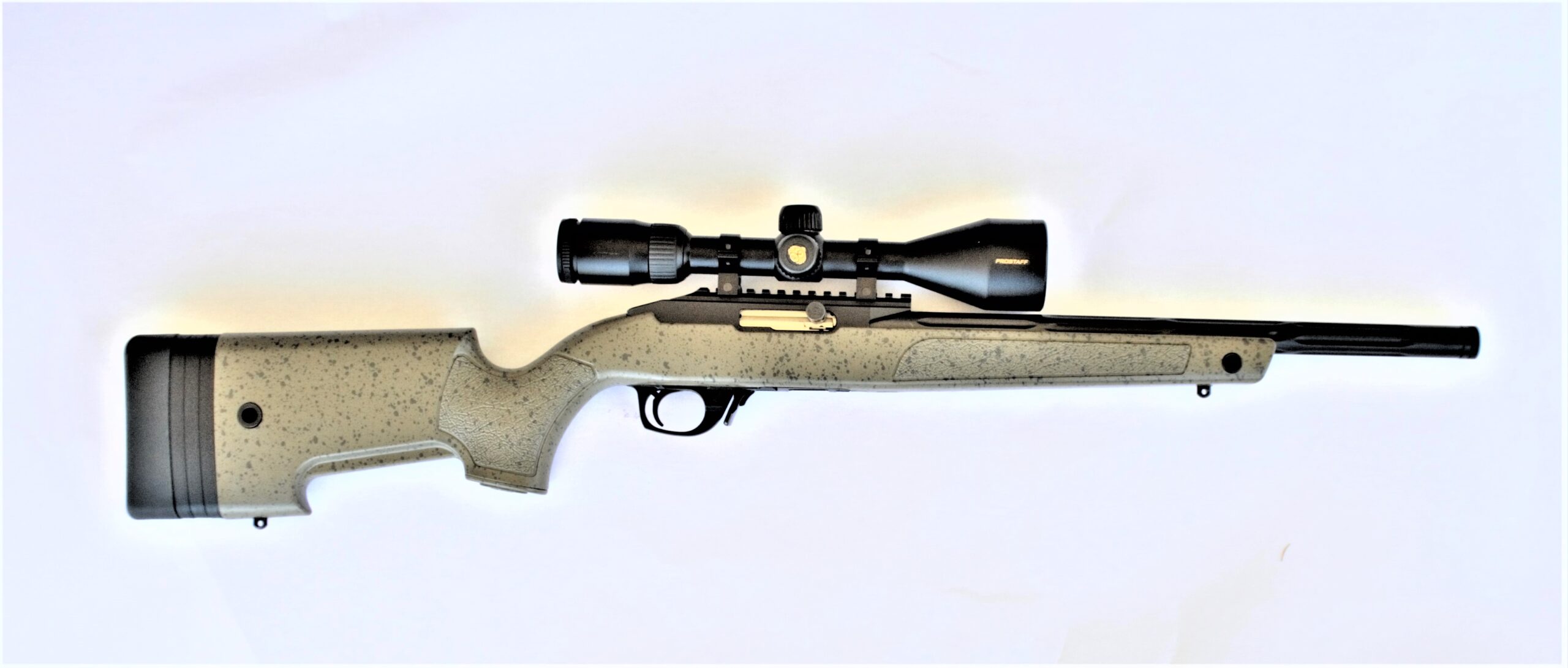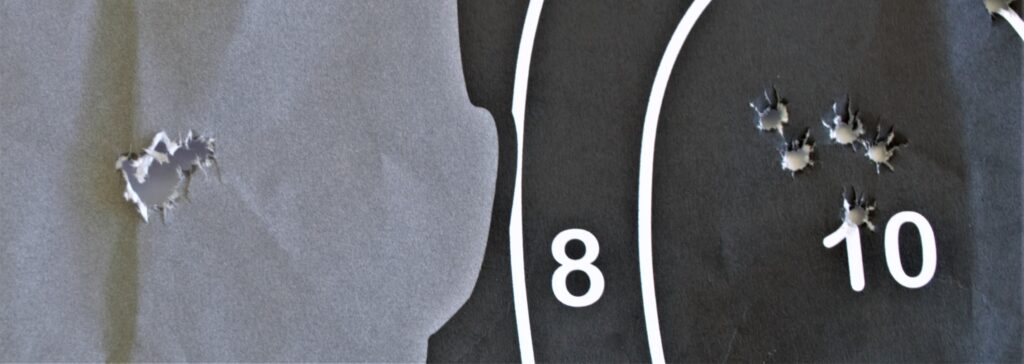
By R.K. Campbell | Contributing Editor
I cannot think of a firearm that has given me more relaxation and enjoyment than a .22 sporter.
I haven’t gone without food often although there have been times when I could afford mayonnaise or mustard but not both. The .22 put meat on the table quite a few times. I began shooting with a Mossberg .22 semiautomatic, then a Marlin bolt gun, the opposite of the ideal I suppose. I thinned sparrows from my Uncle Jimmy’s barn and took rabbits and squirrels as often as possible.
Today I own a number of good .22 sporters. These aren’t target rifles or plinkers but rifles designed for hunting. They are excellent choices for informal target shooting but they may be a little more advanced than a beginning shooter needs. A Remington .22 Targetmaster is the trick for the grandchildren to learn with. Not getting too technical with my description- we all know what a sporter looks like.

Snootiness is allowable for a working man in his choice of rifles. You may purchase a very nice .22 rimfire for the price of an inexpensive center fire rifle. Some of the older rifles bring with them the smell of a barnyard or a crisp morning when the fields are white with snow. Or better yet, the smell of a pot as squirrel stew is making. These are pleasant memories and there is the promise of new adventure as well. I learned a lot about ammunition performance in the old days. With bolt-action rifles it didn’t matter as much. (I never could seem to afford a lever action .22 as a youngster. I finally have a Henry!)
In the automatic realm, the Remington Golden bullet is the Gold Standard for feed rollability. That hasn’t changed. I once purchased the cheapest .22 ammunition on the shelf. CIL Canadian Industries Limited it was. A nice gold and black box and the shells were in a little plastic holder not dumped in together. Some type of thick lube caught every thread in the pocket and gummed the rifle up with lubricant lead and unburnt powder! For fifty-nine cents a box I suppose I had little complaints. I learned about ammunition quality. Accuracy was usually defined by minute of squirrel skull. I took body shots on rabbits.

Function with these rifles was adequate and accuracy good. Twenty-five yards was a long shot and the longest range I tested a rifle at until I was over 14. I had some type of job or chore to bring in toys, a record album or hot dog money from the time I was about six. I just loafed before that sorry to admit. The .22 ammunition allowance was enough to keep me shooting and learning marksmanship while avoiding flinch.
I hunted in places a centerfire would be dangerous and a .22 Magnum too loud. Accuracy was everything. I would take exception to anyone claiming a .22-caliber rifle is an understudy to a centerfire rifle, far from it. The .22 is in a class by itself. Hard to be an understudy when you have one rifle and it is the whole battery! These stand-alone rimfires performed useful chores. Training and taking game went hand in hand.
I used some interesting rifles to be certain including the Remington Targetmaster and Savage 23 Sporter. They are good rifles but any hole left by their cessation of manufacture is filled by better rifles today. Modern .22 rifles are not manufactured of the same quality steel as centerfire rifles, do not need to be, and they don’t always hold up well in generational use. That’s fine.

As an example, the Remington 41 Targetmaster eventually became the Model 510. The original Targetmaster cost about five to six dollars before 1939 when some 300,000 were manufactured. From 1939 to 1962 another 500,000 updated rifles were manufactured. Yet they are seldom seen. The Savage .22 Sport, introduced as an affordable version of the 1919 NRA rifle, cost three to four times the tariff of a Targetmaster “back in the day.” Today there is little difference in the used market.
These early rifles did not have a separate receiver; the barrel and receiver were a single steel tube. The Savage featured dual extractors, dual locking lugs and one of the best designed magazines every fielded for a rimfire rifle. The Savage half cocks on opening and half cocks on closing.

The Remington is loaded and must be cocked in another operation unlike later models. The Remington features a 3.0-pound trigger.
The Savage is almost as good. The Savage features a Schnabel forend.
So do I use these rifles? Sure. Are better sporters made today? Yes!
Among the finest modern rimfire rifles is a recent model of the Ruger 10/22. This sporter features a checkered walnut stock, a 20-inch barrel with a 1:16-inch right hand twist, a 38.5-inch overall length a black finished bolt and a weight of 6.2 pounds. Heavier than a standard 10/22, this rifle handles well. The barrel isn’t pencil thin, but neither is it a bull barrel. It is ideal for a .22-caliber rifle. I have a great affection for the little Ruger.

Another piece that is quite different from anything I used as a youngster is the CZ 455. This European style bolt action rifle is easily the most accurate .22 rimfire I own. It doesn’t lord over the others or make them look bad at all. It simply is more accurate by a measurable margin when I do my part correctly. Another rimfire model that is perhaps my most enjoyable rifle is the Bergara BX 22. I suppose this little carbine with its 16.5-inch barrel shoots like a target gun but it is light enough at just over five pounds for carrying in the field. The Bergara features the nicest trigger action I have ever felt on a .22 caliber self-loader. It is very clean. You don’t have to worry about some things in a .22 such as bolt slap tripping the sear. You may have a light trigger without worries.
Everyone should own a good .22 Sporter. Perhaps more than one! There is one for every budget, age, notion and preference. Good shooting!



